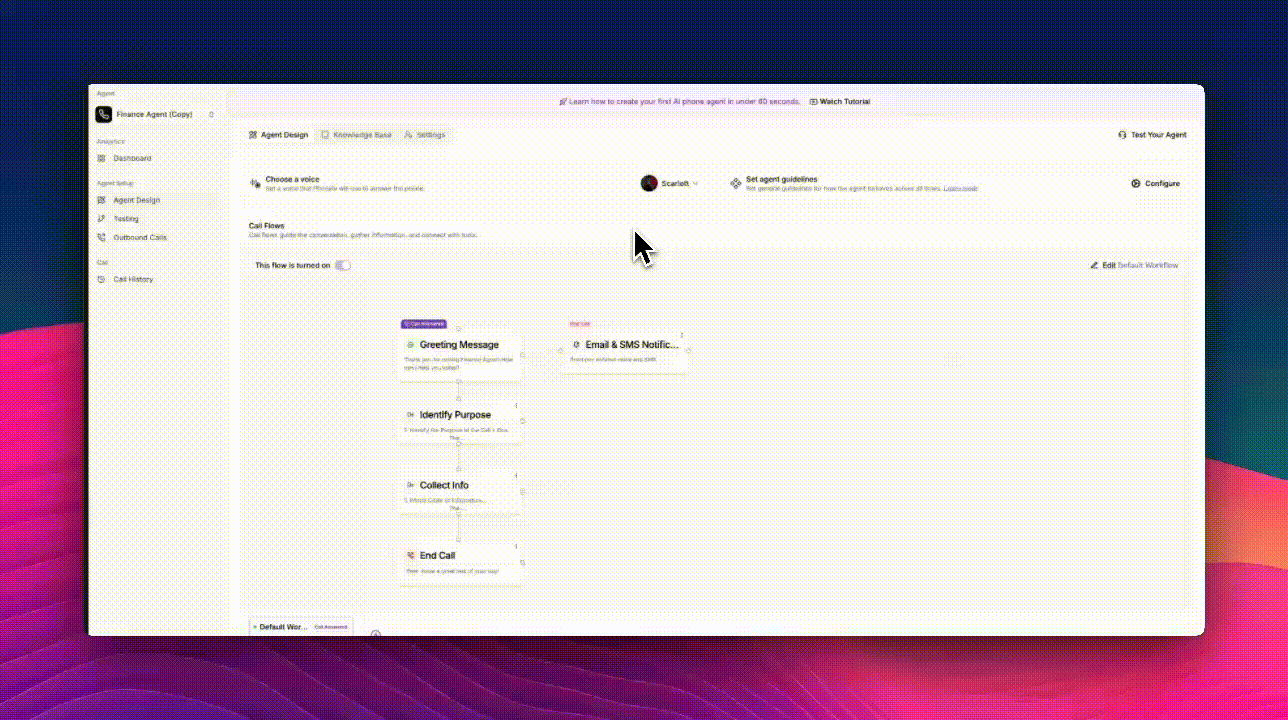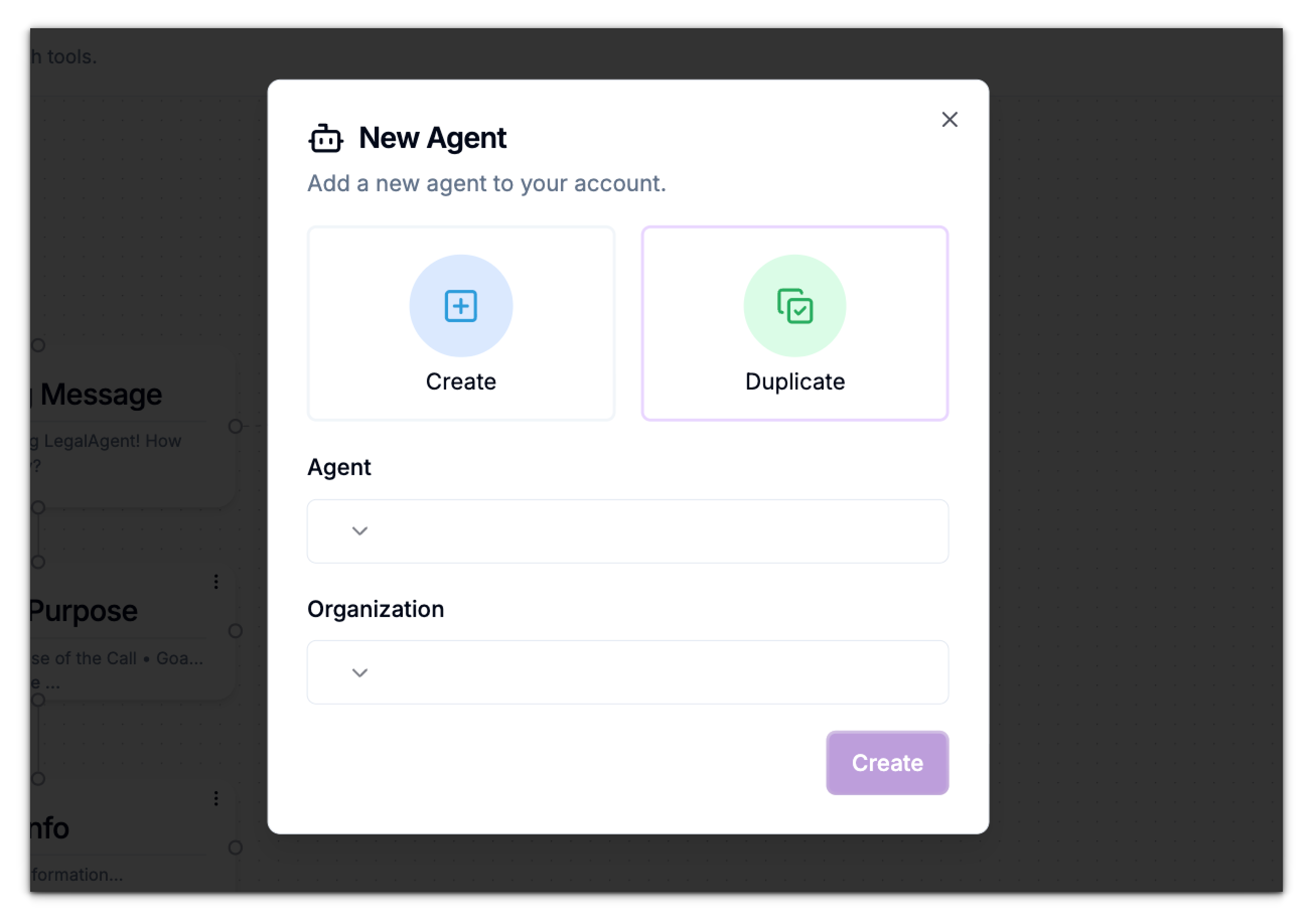
Understanding Agents in Phonely
Each Agent in Phonely acts as an independent assistant with its own:- Primary phone number – the number used to handle incoming and outgoing calls.
- Call workflows – logic and conversation paths unique to that agent.
- Knowledge base – information the agent uses to answer questions and make decisions.
- Guidelines – instructions for how the agent should behave and respond.
- Settings – configurations for integrations, notifications, and post-call actions.
Creating a New Agent
You can create a new agent from scratch to handle a specific business area or campaign.- Navigate to the top of the main menu under the Agent section, click Create Agent.
- In the New Agent window, choose Create.
- Enter a name for your new agent (e.g., Support Agent, Finance Assistant).
- Select the Organization this agent belongs to.
- Click Create.
Duplicating an Existing Agent
Duplicating an agent allows you to quickly reuse an existing setup including workflows, integrations, and voice settings without rebuilding from scratch.- Navigate to the top of the main menu under the Agent section, click Create Agent.
- In the modal, select the Duplicate option.
- Choose the Agent you want to duplicate from the dropdown list.
- Select the Organization to assign the duplicate agent under.
- Click Duplicate.

- The existing workflows.
- The voice and behavior settings.
- Any knowledge base sources or guidelines from the original.
Assigning Phone Numbers
Each agent is assigned one primary phone number.This number is unique to the agent and determines how calls are routed and tracked.
- When creating a new agent, a number can be automatically assigned.
- You can later configure or change the number under the Settings tab of that agent.
- All call logs, transcripts, and reports are tied to that number and its workflows.
Managing Knowledge Bases and Guidelines
Each agent can have its own Knowledge Base and Guidelines to refine how it handles calls.- Knowledge Base:
Upload or connect documents and resources the agent can use to answer customer questions. - Guidelines:
Define tone, personality, and behavior (e.g., “Be polite but concise” or “Always verify customer identity first”).
Managing Organizations
Organizations are the top-level structure in Phonely.They group multiple agents, workflows, and data under one account.
Benefits of Using Organizations:
- Centralized management: All agents, numbers, and billing are linked under one organization.
- Access control: You can manage which team members can view or edit specific agents.
- Separation of departments: Keep distinct data for teams (e.g., Support vs. Legal vs. Sales).
- Consistent settings: Shared integrations, compliance rules, and call analytics live under the same organization.
Editing Agent Settings
Once your agent is created or duplicated, open it to access these sections:- Agent Design - Customize call flows, redial logic, and post-call actions.
- Knowledge Base - Manage uploaded documents or connected data sources.
- Settings - Adjust integrations, notifications, and assigned phone numbers.
- Guidelines - Fine-tune tone, compliance, and behavior preferences.
- Outbound calls - Create outbound workflows and campaigns to help sales, support, and operations teams scale their outreach.
- Testing - Expertiment with prompts, voices, and workflows and deploy agents with confidence.

